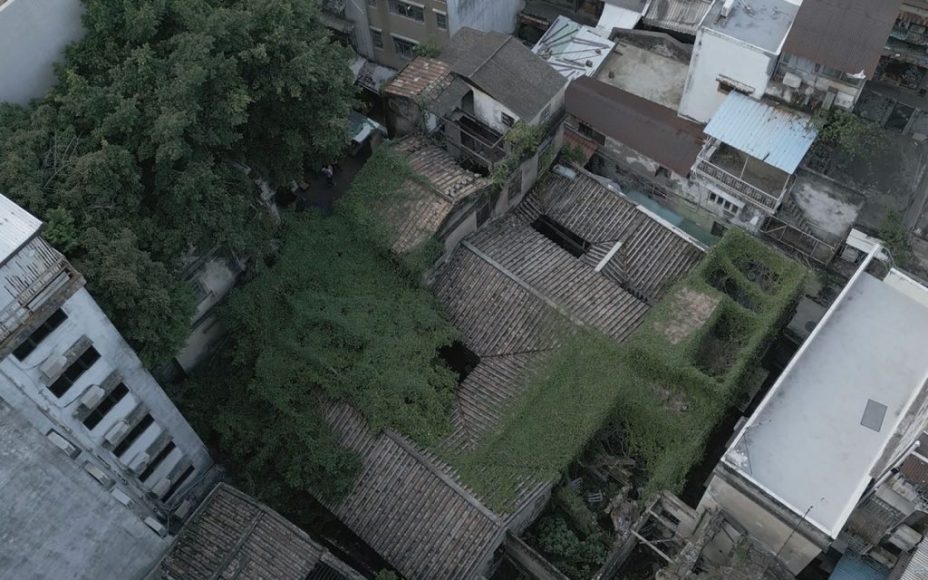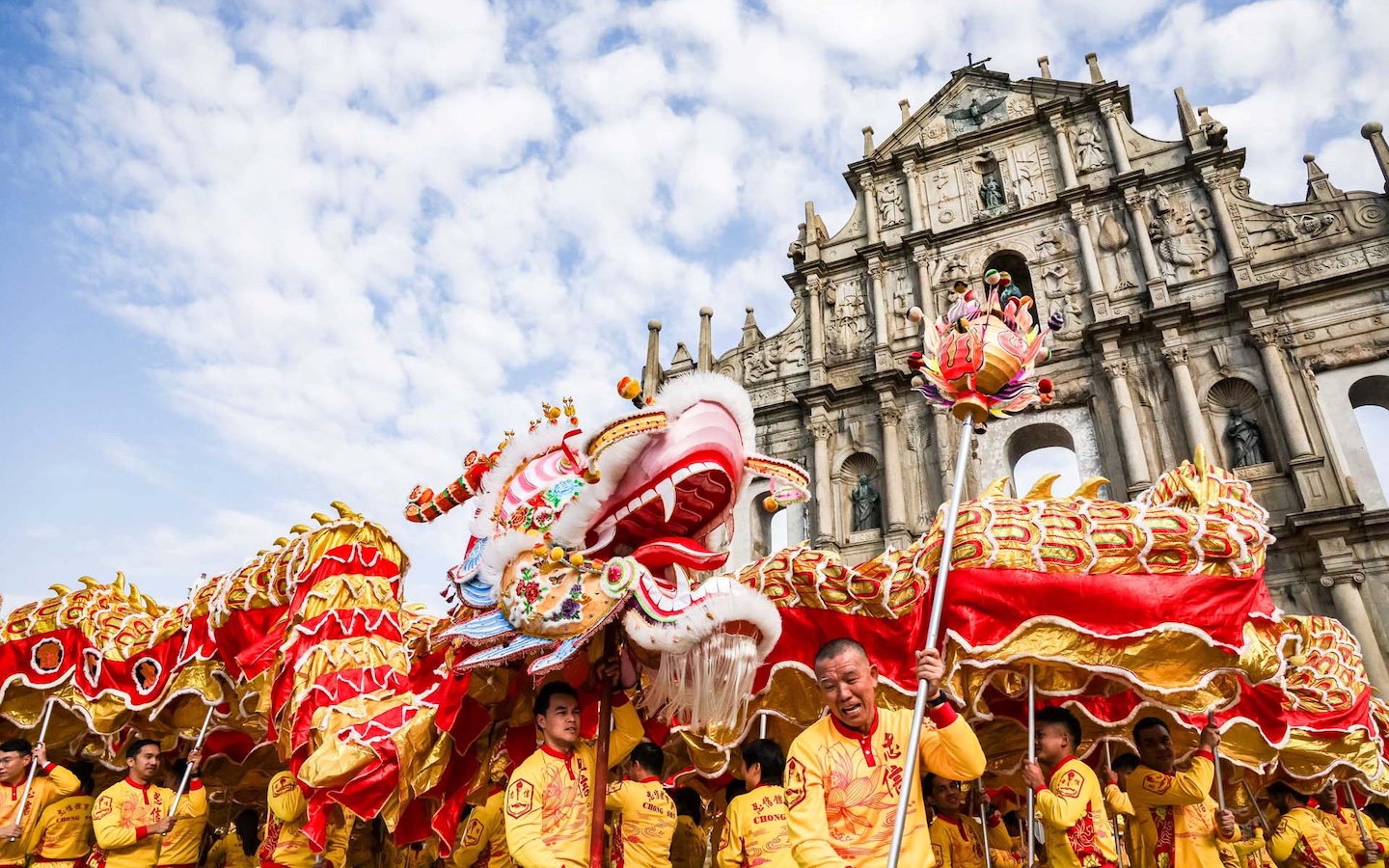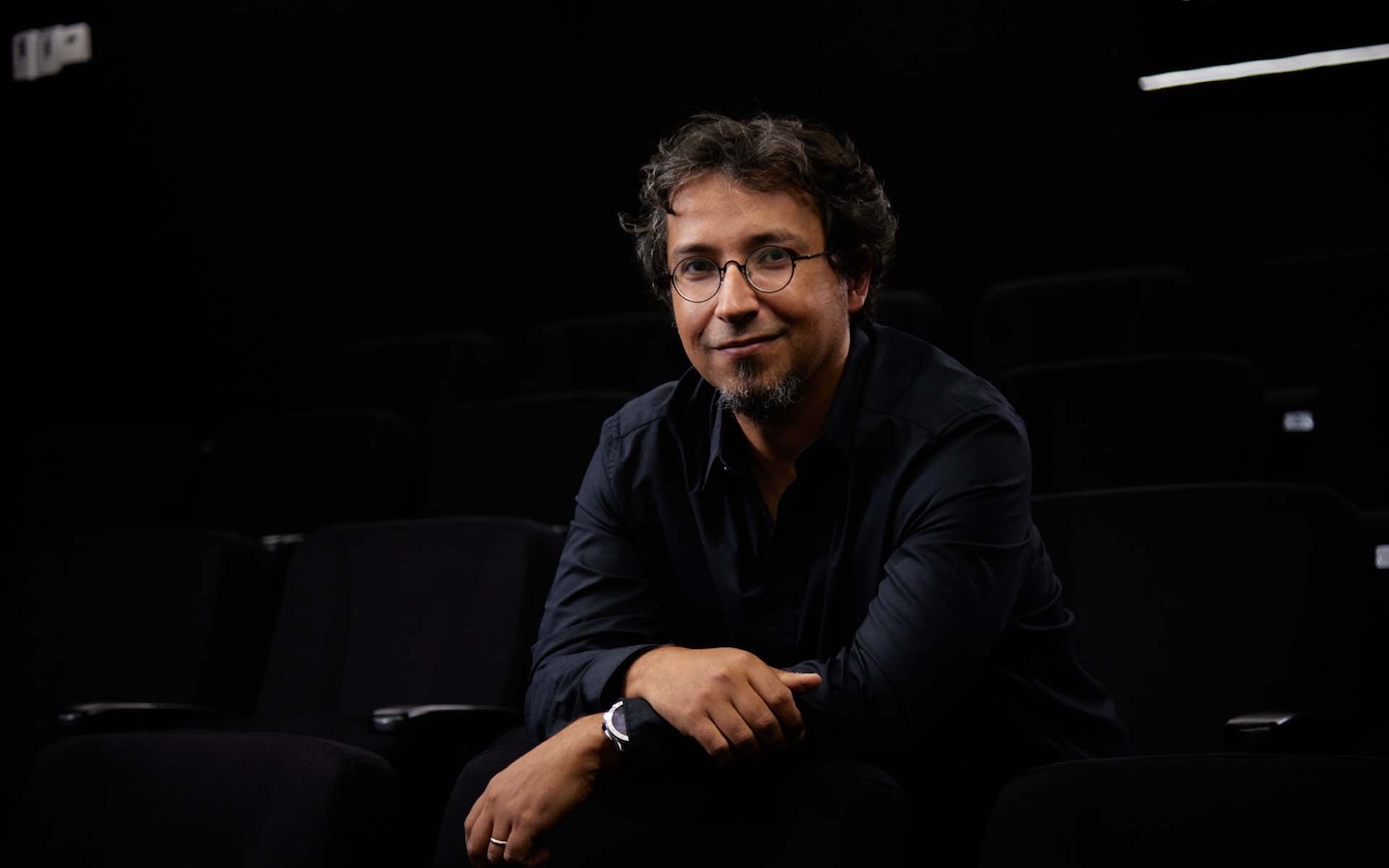For a tiny territory, just 33 square kilometres in size, Macao certainly boasts a surfeit of unique, impeccably preserved feats of architecture. That’s largely thanks to its rich history. Being an indelible part of China with almost 500 years of Portuguese administration under its belt, Macao’s built landscape is like no other. Famously, it’s a place where cathedrals rub shoulders with pagodas. In 2005, the city’s Historic Centre was inscribed on the UNESCO World Heritage List.
Since then, the local government’s own list of protected cultural heritage properties has grown to 165 – the last six of which were added in March this year. This small yet eclectic group reflects the city’s East-meets-West character through both their remarkable architecture and historical purpose. Amongst them, you’ll find Português Suave residences for civil servants, a neo-Arabic memorial to Sun Yat-sen and the city’s most consequential abattoir.
Chio Family Mansion
(Picture shown above)
One of Macao’s most prominent families, members of the Chio clan can trace their lineage back to Emperor Taizong of the Song dynasty (he reigned from 976 to 997). Later generations moved to Macao in the mid-17th century, initially settling in Mong-Há Village. Many Chios were hailed as great academics, often achieving stellar results in the imperial examinations.
In the mid-19th century, father and son duo Chio Un Leok and Chio Vun Ching founded Macao’s first private school. The pair also played an important role in spreading Confucianism in Macao. Chio Vun Ching became known for his staunch promotion of Chinese residents’ interests under Macao’s then-Portuguese administration.
The mid-1800s was also around the time that some members of the Chio family relocated to Travessa da Porta, where their namesake mansion sits to this day. The narrowness of the alley, located off busy Rua dos Mercadores and very near the Ruins of St Paul’s, belies the sprawling scope of the Lingnan-style residence. Construction started at number 26 Travessa da Porta, but spread into number 24 as the family grew. More people meant more add-ons to the home and by 1875, four additional blocks had been erected at each corner to ensure everyone could be accommodated. The main premises comprises an ancestral hall, wing rooms, hallways and several yards.
The complex slowly began emptying out in the 1960s, after witnessing almost a hundred years of Chio family life. The entire premises, unoccupied since the mid-1990s though still containing various pieces of the family’s furniture, is now owned by the Cultural Affairs Bureau and undergoing restoration work.
The Mong Há Villas
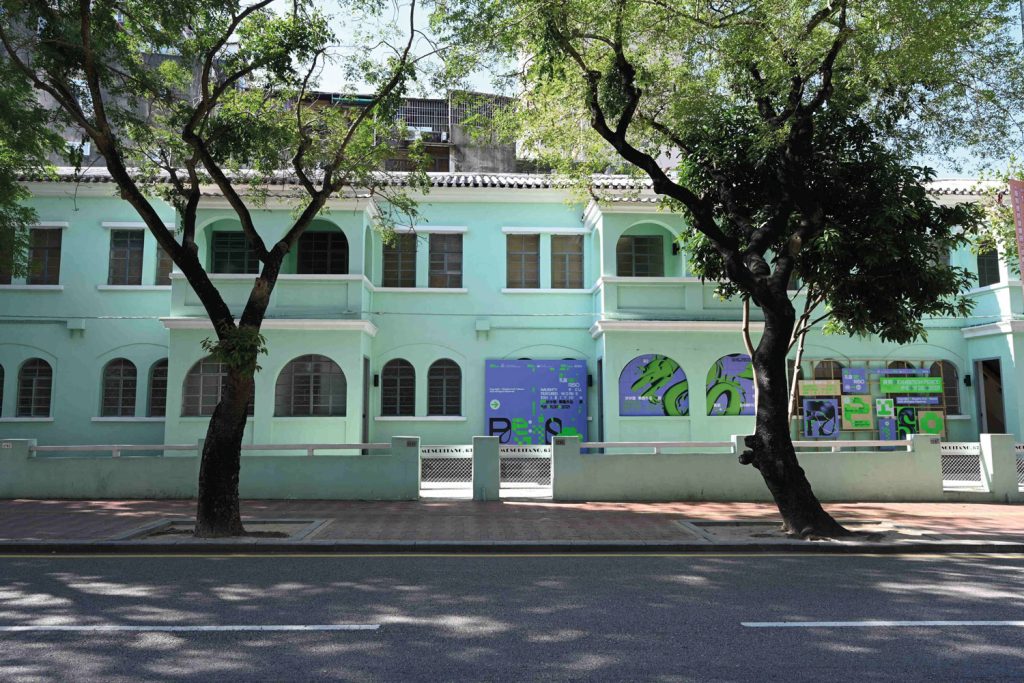
These pretty Português Suave row-houses in Mong Há were built in the early 1950s, to house junior civil servants and their families. Painted crisp mint with white trimmings, the arched front windows, arcade porches and upper-level balconies of 10 of the 12 two-story houses look out onto the tree-lined Avenida do Coronel Mesquita. The other two houses have the same appearance, but are located on the street running perpendicular: Estrada de Coelho do Amaral.
Português Suave was an architectural style promoted during Portugal’s Estado Novo period, part of the Second Portuguese Republic. There are several fine examples of this determinedly ‘Luso’ version of mid-century design in Macao. Visually, the style incorporates art deco elements with ornamentations and motifs borrowed from Portuguese regional architecture of earlier centuries.
The Mong Há Villas were the result of a major influx of migrants from the mainland who, in the early 20th century, put pressure on Macao’s housing stocks (and raised rents). To ease the squeeze, the city’s administrators came up with a plan to build a series of affordable housing complexes for modestly paid public servants – including the Mong Há villas.
The villas’ layouts are identical. There’s a living room, dining room, kitchen and bathroom on the ground floor of each, then two bedrooms and a second bathroom on the upper floor. Courtyards occupy the rear of the complex.
Since 2017, the Cultural Affairs Bureau has been taking over each villa as its tenant departs. The homes are generally in excellent condition and the bureau is taking care to preserve their facades and spatial characteristics in a revitalisation project that will see them used to hold arts exhibitions and retail outlets. The aim is to turn their bright corner of Mong Há into a charming cultural attraction.
Senior civil servants’ homes
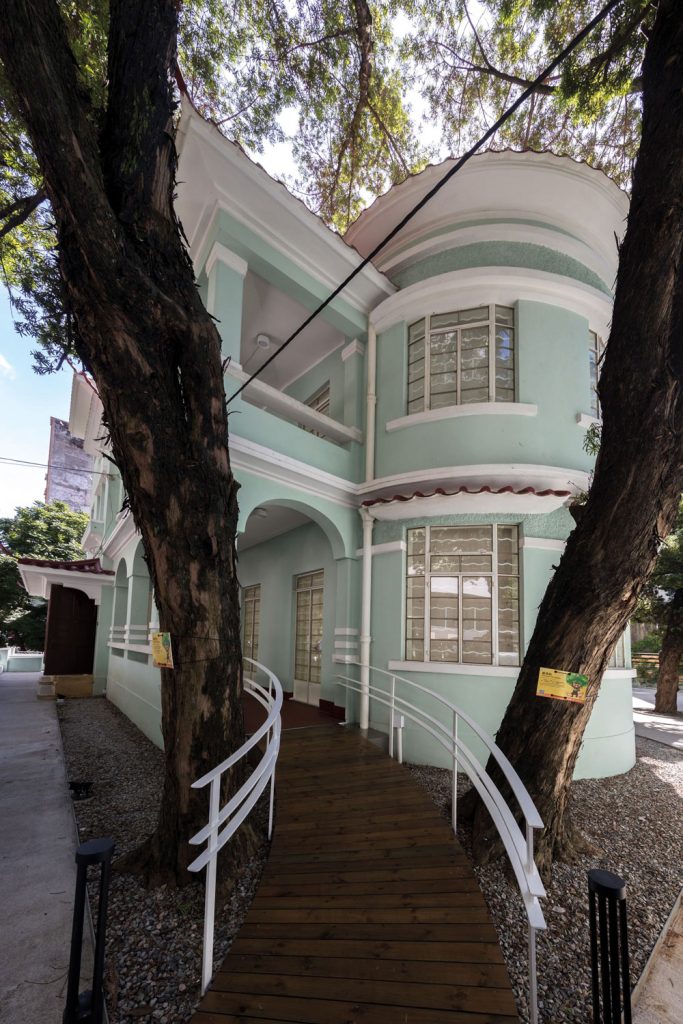
After the success of the new row-houses for lower-ranked civil servants (including the Mong Há Villas), the head of the Macao’s Post, Telegraph and Telephones Office proposed building a selection of more salubrious homes for its senior employees. These were completed in 1954, in the same Português Suave-style and colour scheme as the villas. They are also located in Mong Há, on Avenida do Coronel Mesquita and Rua de Francisco Xavier Pereira.
The four semi-detached buildings each contain two generously proportioned apartments; one on the upper floor, one on the lower (eight families could be accommodated in total). Significantly larger than the villas and boasting distinctive semi-circular living rooms, these apartments each had three bedrooms, a storage room, servants quarters and a garage. Their inhabitants also had access to a communal garden.
The Cultural Affairs Bureau has transformed both the apartments of one of the buildings into the carefully curated Xian Xinghai Memorial Museum. Perhaps the most outstanding Chinese composer of the 20th century, Xian was born in Macao in 1905 and remains celebrated for his Yellow River Cantata.
Dr Sun Yat-sen Memorial House

Hailed as the pioneer of China’s democratic revolution, Sun Yat-sen (1866-1925) has close ties with Macao. While the doctor who ignited a revolution that overturned 2,000 years of imperial rule was born in Guangdong Province, his father spent much of his early life in Macao. Sun himself moved to Macao in 1892, where he worked at Kiang Wu Hospital as the first Chinese doctor to practise Western medicine.
Sun spent just over a decade living between Macao, where he treated patients, and Hong Kong – where he conspired to bring down the Qing dynasty. During this time, he befriended Francisco Hermenegildo Fernandes, a Portuguese printer and translator who shared his anti-imperialist philosophy and later settled in Macao. In 1895, after the doctor incited an unsuccessful uprising in Guangzhou that blackened his name with China’s imperial rulers, Fernandes helped smuggle Sun out of Macao and into Japan.
As a token of his gratitude, Sun gifted his Portuguese friend many of his belongings. These are now on display at the Dr Sun Yat-sen Memorial House, located at 1 Rua de Silva Mendes, in São Lázaro District.
Sun never actually lived in this house, which was in fact built in 1931 – after his death. The three-storey neo-Arabic structure was a replacement for the house Sun had purchased for his first wife, Lu Mu-zhen, and their three children back in 1912. That original residence was destroyed in 1931 because of an explosion at a nearby munitions warehouse. The house, with its ornate verandahs, remained Lu’s home until her death in 1952.
The building opened to the public as the Dr Sun Yat-sen Memorial House in 1958. Today it is a boutique museum, full of artefacts and exhibits honouring the remarkable life and many chapters of its famous namesake. The Memorial House is located very near the Lou Lim Ieoc Garden, where Sun was received during his first visit to Macao after the 1911 Xinhai Revolution successfully led to China becoming a republic.
Barra’s former slaughterhouse
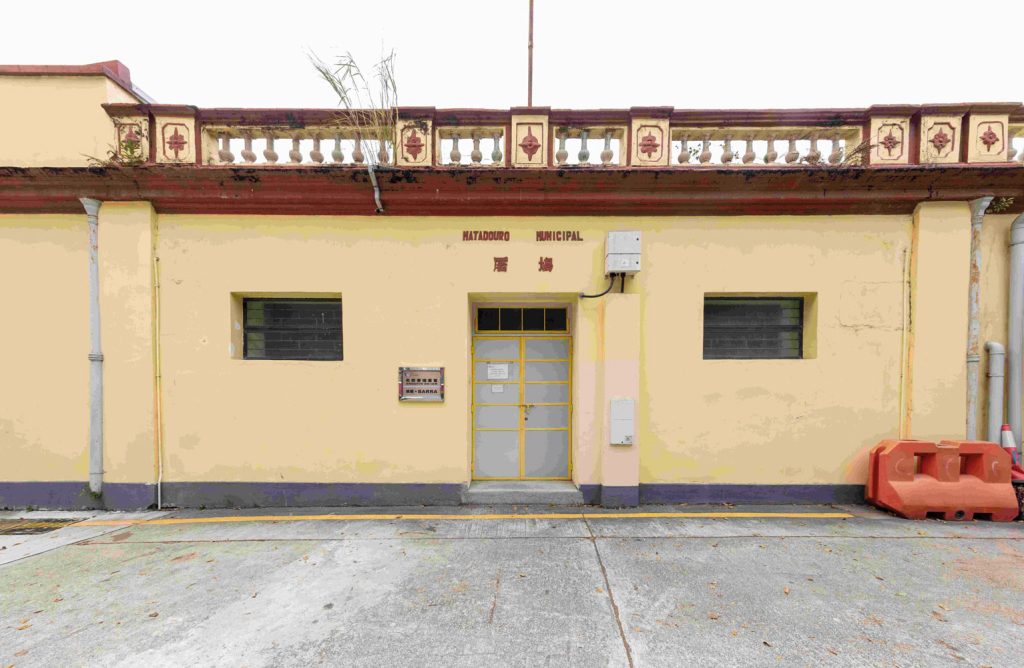
Within walking distance of one of Macao’s most iconic buildings, the 500-year-old A-Ma Temple, is a former slaughterhouse (mostly) erected in the 1880s. Despite its more earthly purpose, the slaughterhouse complex holds cultural and architectural significance for the city. Painted buttery yellow with red ochre trim, its buildings are some of the few left epitomising the municipal construction style of 19th-century Macao.
Importantly, the Barra slaughterhouse also represents Macao’s progressive modernisation. The city’s sole abattoir for much of the 20th century, it underwent significant changes over time – mainly in response to calls for better sanitation and to accommodate a growing volume of cattle and pigs entering the territory for slaughter. The complex included a quarantine area, barns and holding pens, a killing zone and facilities for butchering animals whose meat supplied local markets.
It was at this dock-side location where meat processing and transportation was gradually standardised in Macao, with improvements to sanitation and machinery making operations ever-safer and more efficient.
The Barra slaughterhouse remained in operation for 100 years. Then, in 1987, the service was relocated to a newly built slaughterhouse in Green Island, the northwestern part of the Macao Peninsula. While part of the original slaughterhouse has been converted into offices for the Municipal Affairs Bureau, echoes of the building’s past remain – including metal tracks across its ceiling from where carcasses were once hung.
The Coloane public health station-turned-customs office

Coloane didn’t get its first public health station until the 1930s due to the island’s sparse population. The low-slung, Modernist structure initially hosted clinic hours on Tuesdays, Thursdays and Saturdays with a doctor trained in Western medicine – dispatched from Conde S Januário Hospital. Only simple illnesses were treated at this posto sanitario (‘public health station’ in Portuguese). Anyone with a serious ailment was sent to Macao Peninsula, where more advanced medical assistance was available.
However, most Coloane residents at the time were Chinese and unfamiliar with Western medicine. They tended to favour traditional cures and seek remedies from local herbalists. As such, the posto sanitario saw little traffic. By the early 1970s, the station had been abandoned.
Later that decade, its building was repurposed as a customs office manned by the police. Initially, it served as a declaration point for Hengqin merchants bringing agricultural products by boat into Macao to sell. In the 1980s, the Macao Meteorological and Geophysical Bureau also set up shop in the building; for a time, it was where typhoon warnings were hoisted from.
From the 1990s onwards, Macao residents travelling by boat from Coloane to Hengqin have had to pass through the former posto sanitario and complete their formalities in the building. In 2001, the Macao Customs Service officially took control of the building. It was renamed the Customs Office of the Port of Coloane and Ká-Ho and has served that purpose ever since.
The pale yellow building itself is a fine example of Modernist architecture with Art Deco influences. It also boasts an admirable feat of form and function: this cantilevered sun shield encircles the office, protecting those in need of its services from sun and rain.
